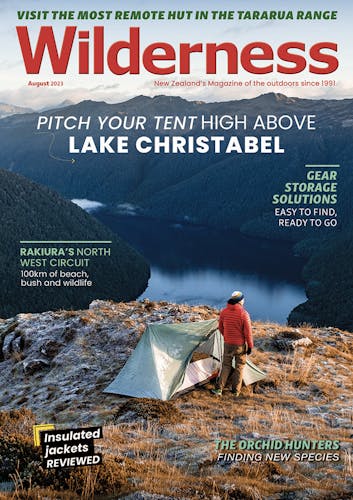Photographer and writer Colin Monteath might be as close to a genuine citizen of Antarctica as it’s possible to find. His prodigious experience climbing and documenting that continent has led to his latest book: Erebus: The Ice Dragon.
It seems that much of your life has been spent in Antarctica.
I’ve now had 32 summer seasons there, spanning 1973 to 2020. During the 1970s and early 80s I was field operations officer for the New Zealand Antarctic Research Programme, attached to various different field parties. This improved my understanding of what the scientists were attempting and how to organise the logistical support for a safe operation. I was also in charge of the Scott Base huskies and the training of the Kiwi dog handlers.
Tell us about your new book.
Erebus forms a spellbinding backdrop to Scott Base. The volcano looks friendly and benign from sea level, yet working near the summit poses a unique set of challenges and dangers. The discovery of an active volcano at 78 degrees south astounded the science world in 1841, so I wanted to record the long history of human involvement with it. Aspects of contemporary Erebus science are also proving crucial to learning how to operate in extreme extraterrestrial environments.
How did you approach writing about the 1979 air crash?
I was nervous about what was appropriate and kept delaying that section. Then the idea hit me of involving three other friends – Rex Hendry, Hugh Logan and Harry Keys – who also played a vital role in the recovery operation. The resulting four essays are carefully worded and will hopefully help readers understand what actually happened.
You were the first person to descend into the active inner crater of Erebus. How did that feel?
I needed to make sure the rope and pulley system we had rigged up on the lip of the inner crater worked efficiently, but clearly it was still a madcap adventure. What did I think, going over the edge? ‘Surely, this is not on my public service job description!’
How did you gain the skills for climbing in Antarctica?
I had a number of seasons climbing in the Southern Alps and later guided and worked on the rescue team for Lands and Survey. This eventually led to my first season at Scott Base, then a full-time position in 1975. It was a terrific job, which included three expeditions to the summit of Erebus.
And what are the particular challenges of mountaineering there?
Even with modern air support, Antarctic peaks are remote, so it is always important to climb within one’s technical limits. Each season at Scott Base I employed between eight and 14 mountaineers to support science parties and to form a rescue team. They were encouraged to climb whenever possible (usually at night as it doesn’t get dark), as long as they were back at ‘work’ next morning. This kept the climbers in tune with a strange new environment. And our safety record speaks for itself.
What brought you to begin recording your adventures with photography and writing?
Antarctica is the perfect training ground to learn how to take photos in difficult conditions. Later, on both Antarctic and Himalayan expeditions, I improved my writing style to sell adventure features around the world. These days, I also run Barking Mad Books, a specialist polar and mountaineering bookshop in Christchurch. You do have to be a little ‘barking mad’ to work in Antarctica, but meeting like-minded people there is one of its great joys.

Erebus: The Ice Dragon is available on the Wilderness website. Subscribers get a 10% discount.








